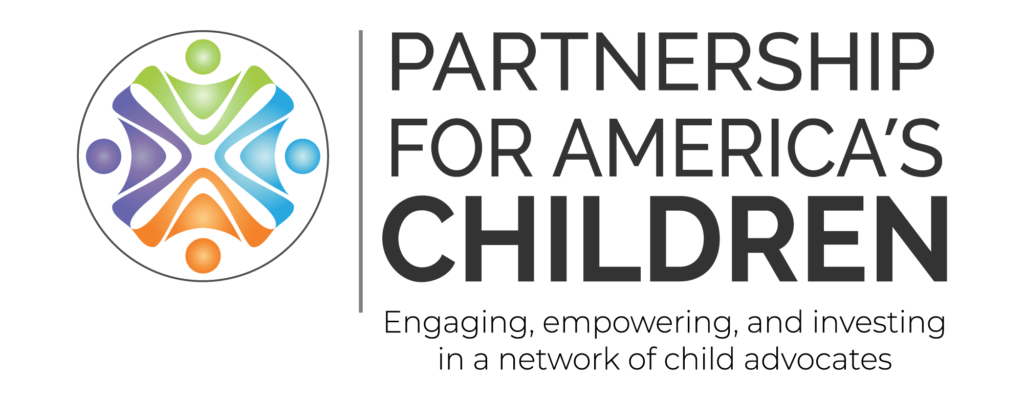This federal update was created in partnership with Meredith Dodson, Senior Director of Public Policy at the Coalition on Human Needs.
Key Things to Know:
- House Budget in Focus: The House is set to vote on a resolution proposing over $4 trillion in tax cuts funded by deep spending cuts on SNAP, Medicaid, child nutrition, education programs, and more. Talk to Republican representatives—some are expressing concerns about the magnitude of the proposed cuts and what it will mean for their constituents.
- Senate’s Two-Step Approach: The Senate is pursuing a more cautious path, separating its budget bills and proposing up to $342 billion in new spending with a smaller set of spending cuts now – with larger budget and tax legislation later. Engage with Senate Republicans to underscore how even this approach risks essential services and could impact local families.
- Your Advocacy is Crucial: As both chambers move forward with their votes and eventually coalesce around one budget plan, now is the time to call on Republican lawmakers to prioritize constituents’ needs over tax cuts for the wealthy. Ensure they understand the real-life impacts these cuts will have on children and families.
Recent developments on Capitol Hill—and sweeping executive actions since President Trump’s inauguration on January 20, 2025—could potentially reshape funding for children’s health, education, and economic security across our states. As state child advocates, it is crucial to understand these federal shifts, which span budget proposals, executive orders, judicial challenges, congressional oversight, and major administrative changes. Together, these actions shape the landscape for the programs our communities depend on.
Budget Negotiations
House Republicans
The House Budget Committee has released a budget resolution designed to fulfill President Trump’s legislative agenda. This plan proposes over $4 trillion in tax breaks that largely benefit the wealthy and major corporations. To pay for these tax provisions , the resolution mandates deep spending cuts across key programs over the next decade:
- SNAP: The Agriculture Committee must generate $230 billion in cuts, directly endangering food assistance for over 40 million Americans. In addition, proposals for work requirements could further reduce participation rates, disproportionately affecting vulnerable children and families.
- Medicaid: The Energy and Commerce Committee is tasked with generating $880 billion in cuts, risking coverage for more than 70 million people. The introduction of work requirements and per capita caps could force states to reduce benefits, delay care, or even push families into medical debt.
- Child Nutrition and Education Programs: The Education and Workforce Committee must generate $330 billion in cuts. Reduced funding here could undermine programs that support early learning and basic nutrition for children.
Additionally, the House plan includes raising the debt ceiling by $4 trillion to support these measures. In essence, this approach aims to fund generous tax cuts by drastically cutting federal spending on programs that directly benefit children and families.
Senate Republicans
In contrast, the Senate Budget Committee is pursuing a more cautious, two-step approach. Their initial budget resolution—leaving the President’s tax agenda for a later vote—calls for up to $342 billion in new spending, offset by cuts to programs. Although this proposal appears less extreme, it still paves the way for significant reductions in federal support for essential programs like Medicaid and SNAP.
What’s Next?
Both the House and Senate will vote on their respective bills (with Senate votes February 19-21on the first of two). If you have Republican representatives, urge them to oppose budget plans that would remove funding for some of the basic necessities that millions of children rely – food and healthcare. Policymakers need to understand the potentially negative impacts of cutting funding for these programs.
Appropriations & Continuing Resolutions
Congress has passed a continuing resolution (CR) to fund the government through March 14, 2025. However, if Congress does not complete the FY25 appropriations process or extend the CR, the government will shut down. Flat funding under a continuing resolution translates to a funding cut for critical programs such as WIC, housing assistance, child care, Head Start, TANF, and more.
Federal Funding Freeze
Executive orders signed by President Trump have halted the obligation or disbursement of federal financial assistance in several areas, particularly those related to diversity, equity, and inclusion. A federal judge’s temporary block of some funding freeze measures signals that parts of these policies may not withstand judicial scrutiny. Although Medicaid and CHIP are currently unaffected by the freeze, programs for early childhood education, afterschool initiatives, and foster care support now face uncertainty. Funding freezes could create sudden financial shortfalls, forcing states to intervene and urging advocates to push for emergency state-level funding measures or seek alternative local philanthropic support.
The current federal landscape—marked by deep budget cuts, executive branch restructuring, judicial challenges, and significant policy shifts—poses many opportunities for child advocates at the state level. It is essential that we come together to ensure that federal actions do not undermine the well-being of our children and families. By staying informed, mobilizing communities, and engaging proactively with policymakers, we can help safeguard the vital resources our children need to thrive.
Thank you for your tireless commitment.
Resources
- CHN: Budget Resource Library, State and Local Data Resource Library, updated budget and tax toolkit for local groups (Winter 2025), and CHN/partner events joint calendar — includes the proposed GOP budget timelines
- Center on Budget and Policy Priorities (CBPP)
https://www.cbpp.org/
A leading institute analyzing Medicaid, SNAP, and other critical programs. - Congressional Budget Office (CBO)
https://www.cbo.gov/
Non-partisan economic and budgetary analysis for Congress. - CBPP Paper: “To Better Meet Record Levels of Need, Keep Families Housed, Congress Must Increase 2025 Funding for Housing Assistance”
https://www.cbpp.org/research/housing/to-better-meet-record-levels-of-need-keep-families-housed-congress-must-increase
A report on the necessity of increased funding for housing assistance. - CBPP messaging for House and Senate
- House Message: The House Republican budget plan would require very deep cuts in critical programs like Medicaid, SNAP, education and climate investments to pay for tax cuts that mostly help the wealthy. [Staters] deserve policies that put us first, not millionaires and wealthy corporations. Instead, President Trump and Congressional Republicans plan to put millionaires and wealthy corporations ahead of everyone else, showering them with tax cuts. They plan to pay for it by raising health care, nutrition, energy and other costs for the rest of us and taking away essentials like health care, food assistance, and other income supports. Instead, policymakers should ensure everyone can afford to see a doctor, and put food on the table, and they should make the wealthy and corporations pay their fair share of taxes.
- Senate Message: The Senate Republican budget paves the way for potential cuts in critical health care (Medicaid) and nutrition assistance (SNAP) programs. As a result, this budget ultimately could take away some food assistance and health coverage from millions of people struggling to make ends meet. Families may see the cost of their health care and food go up. The budget cuts in this plan pay for increased spending for defense and border control. At the same time, this budget shows Republicans intend to extend the expiring tax cuts that mostly benefit the wealthy. This is not what [STATERS] need. Instead, our policymakers should pass a budget that ensures families can afford to put food on the table and to see a doctor. The Senate must do better than this.
- State-Level Data on Housing Assistance
https://www.cbpp.org/research/housing/to-better-meet-record-levels-of-need-keep-families-housed-congress-must-increase
Data to inform state-level advocacy on housing assistance. - Data on Potential Impacts for Programs
https://docs.google.com/document/d/1VJWe_OKtoa13Y2bzPvAw8BkfznTPnV27-JhV3ATNt1g/edit?tab=t.0
Analysis of potential program impacts under current budget proposals. - House Budget Resolution Graphics
https://www.dropbox.com/scl/fo/73u7thobxdth3p55ziqgz/AHGs8NHtwkY003d8us0hpj0?rlkey=16z10jg9swdkwv4thuv7vnscg&e=1&st=28wtay47&dl=0
Visual graphics supporting the House budget resolution. - Federal Funding to States (Spreadsheet)
https://docs.google.com/spreadsheets/d/13qknPvqX4zR7LdM1tnA4ogmp19nqTeV5J0zME9Gb7uI/edit?usp=sharing
Data on federal funding allocations affecting state budgets. - Federal Funding to States (Brief)
https://www.cbpp.org/research/state-budget-and-tax/president-trump-congressional-republican-proposals-would-shift-large
An overview of how proposed cuts may impact state funding. - CHN Library of Resources on Trump Administration Activities & Rapid Response Actions
https://docs.google.com/document/d/1nFnQanWAkA5VnGq4FAxsb9kQ08P7LIr6hYglw-yXNQo/edit?tab=t.0#heading=h.urg3citmvbnl
A comprehensive resource for tracking federal policy changes. - Child Care for Every Family Network Resources
https://drive.google.com/drive/folders/16a2aB1KVqtuE7VQ9Vz6jNvU5-mdnoxT8?emci=33438ba4-db7d-ef11-8474-6045bda8aae9&emdi=52317c57-1990-ef11-8474-000d3a98fa6b&ceid=5264050
A hub for child care messaging, reports, and polling data. - Child Care Messaging Guide (c3 Version)
https://docs.google.com/document/d/1gf656L1aWvHKbVX8dKdbGjolxABxXsj9AfhAZEopxr4/edit?emci=33438ba4-db7d-ef11-8474-6045bda8aae9&emdi=52317c57-1990-ef11-8474-000d3a98fa6b&ceid=5264050&tab=t.0#heading=h.clbycjmd0400
A guide for effective child care messaging.

